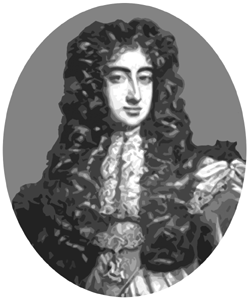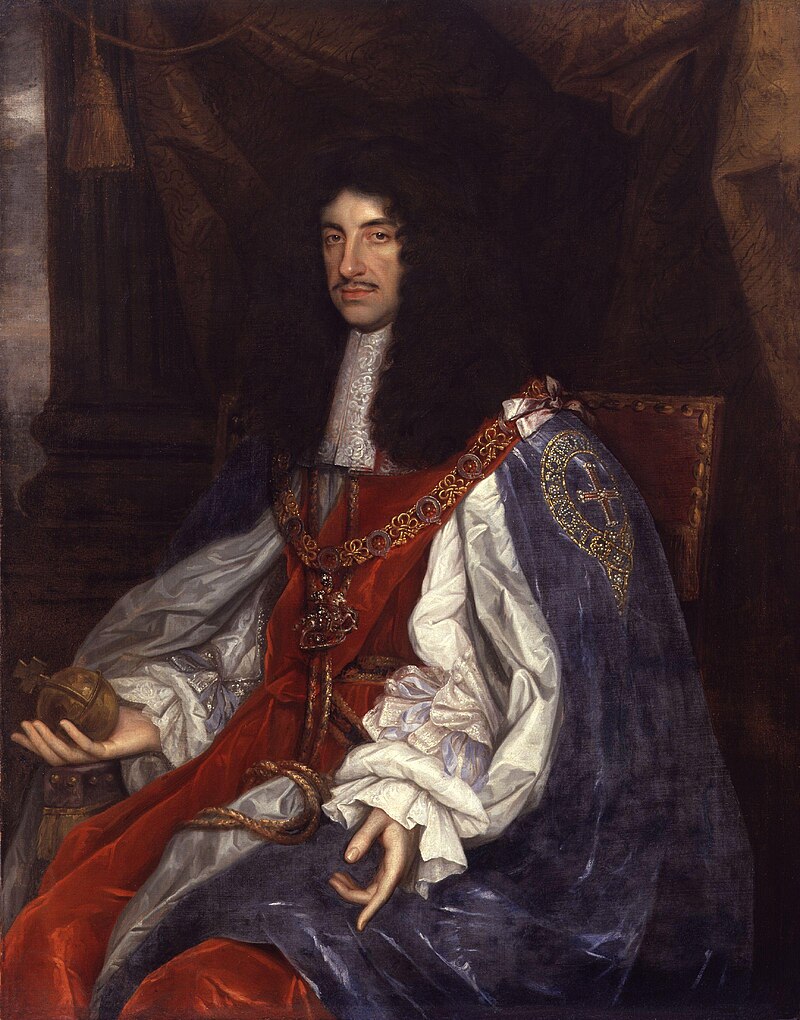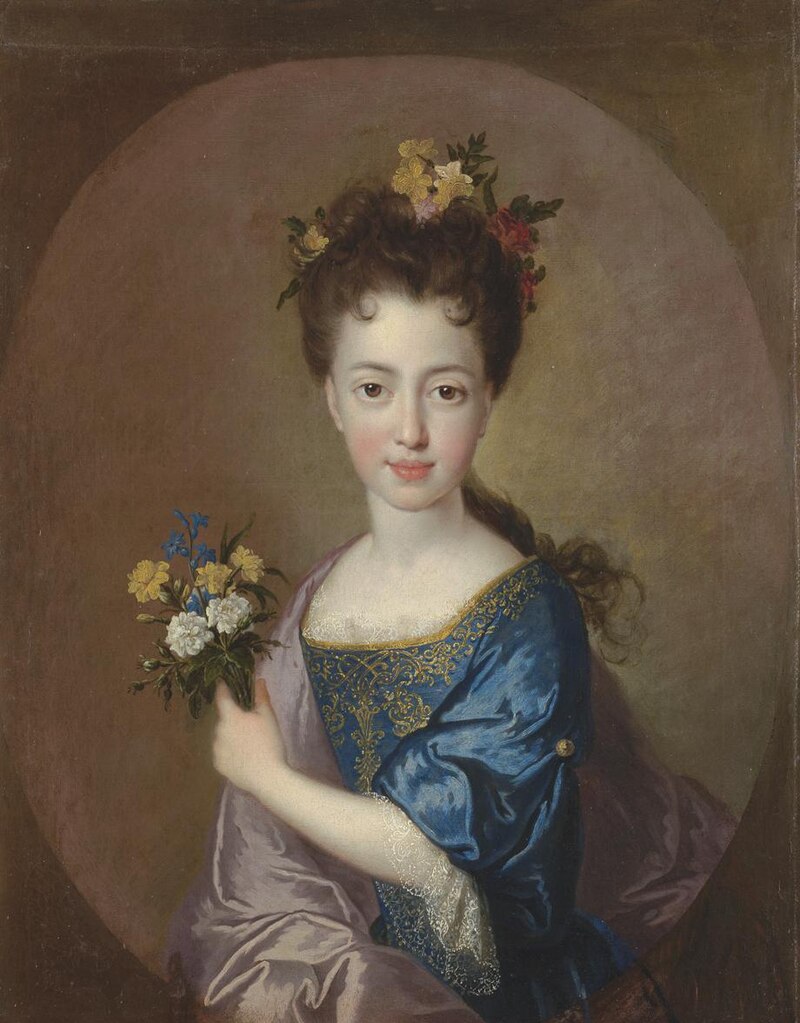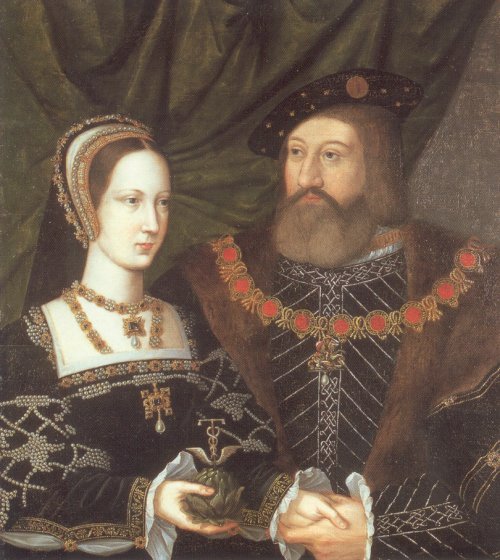by Susan Flantzer
© Unofficial Royalty 2024

George Fitzroy, 1st Duke of Northumberland; Credit – Wikipedia
Despite fathering many illegitimate children with his mistresses, King Charles II of England had no children with his wife Catherine of Braganza. Charles II is an ancestor through his mistresses of many British aristocrats and of several women who married into the British Royal Family. Lucy Walter and Charles II are ancestors of Sarah, Duchess of York and Princess Alice, Duchess of Gloucester. Barbara Palmer, 1st Duchess of Cleveland and Charles II are ancestors of Diana, Princess of Wales and Sarah, Duchess of York. Louise Renée de Penancoet de Kérouaille, Duchess of Portsmouth and Charles II are ancestors of Diana, Princess of Wales, Queen Camilla, and Sarah, Duchess of York.

King Charles II of England; Credit – Wikipedia
Born on December 28, 1665, in a Fellow’s chamber (a Fellow is a member of the teaching staff) at Merton College, University of Oxford in Oxford, England, George Fitzroy, 1st Duke of Northumberland was the illegitimate son of King Charles II of England and one of his mistresses, Barbara Palmer, 1st Duchess of Cleveland in her own right. The surname FitzRoy comes from the Anglo-Norman Fitz, meaning “son of” and Roy, meaning “king”, implying the original bearer of the surname was a child of a king. George’s paternal grandparents were King Charles I of England and Henrietta Maria of France (the daughter of King Henri IV of France and his second wife Marie de’ Medici). His maternal grandparents were William Villiers, 2nd Viscount Grandison and Mary Bayning.

George’s mother Barbara Palmer, 1st Duchess of Cleveland; Credit – Wikipedia
George’s mother was born in 1640 as Barbara Villiers, the only child of William Villiers, 2nd Viscount Grandison and Mary Bayning. In 1643, Barbara’s father died in the First English Civil War, leaving his 18-year-old widow and his three-year-old daughter in financial difficulty. Barbara’s mother soon married Charles Villiers, 2nd Earl of Anglesey, her late husband’s cousin. The marriage was childless and Barbara’s stepfather died from smallpox in 1661. Barbara was considered one of the most beautiful of the young Royalist women but her lack of a dowry did not help her marriage prospects. In 1659, Barbara married the Roman Catholic Roger Palmer, later 1st Earl of Castlemaine, against his family’s wishes. In 1660, Barbara became King Charles II’s mistress.
Besides George, Barbara gave birth to five other children and it is surmised that they were all the children of King Charles II. Through their children, Barbara Palmer and King Charles II are the ancestors of Diana, Princess of Wales and Sarah, Duchess of York, and their children Prince William, Prince Harry, Princess Beatrice, and Princess Eugenie. As a reward for Barbara’s services, Charles II created Roger Palmer Earl of Castlemaine in 1661.
The children of Barbara Palmer, probably the children of King Charles II, and therefore, probably the full siblings of George:
- Lady Anne FitzRoy (1661 – 1721), married Thomas Lennard, 15th Baron Dacre, 1st Earl of Sussex, had four children
- Charles Fitzroy, 2nd Duke of Cleveland, 1st Duke of Southampton (1662 – 1730), married (1) Mary Wood, no children (2) Anne Pulteney, had six children
- Henry Fitzroy, 1st Duke of Grafton (1663 – 1690), married Isabella Bennet, 2nd Countess of Arlington in her own right, had one son
- Lady Charlotte Fitzroy (1664 – 1718), married Edward Lee, 1st Earl Lichfield, had eighteen children
- Barbara FitzRoy (1672–1737), unmarried but had an illegitimate son; she became a nun taking the name Sister Benedicta; her mother claimed that she was Charles II’s daughter but she was may have been the child of her mother’s second cousin and lover John Churchill, later 1st Duke of Marlborough
On October 1, 1674, nine-year-old George was officially recognized by his father King Charles II, and was created Earl of Northumberland, Baron of Pontefract, and Viscount Falmouth. The following year, he was created Duke of Northumberland. In 1684, Henry fought on the side of the French in the Siege of Luxembourg, when the French successfully laid siege to the Spanish-controlled Fortress of Luxembourg. That same year, George was created a Knight of the Order of the Garter. The diarist John Evelyn wrote of George, he was “the most accomplished and worth owning of Charles II’s children, and a young gentleman of good capacity, well bred, civil, and modest…extraordinarily handsome and well shaped and skilled in horsemanship.”
On February 2, 1685, King Charles II suffered an apparent stroke and died four days later at the age of 54. Modern analysis of his symptoms seems to indicate he may have died from uremia, a symptom of kidney failure. Charles knew his death would affect his illegitimate children. While on his deathbed, he implored his brother and successor, the soon-to-be King James II, to “be kind to George, as I am sure he will be honest and loyal.”
In March 1686, George secretly married Catherine Wheatley, the daughter of Robert Wheatley of Bracknell and the widow of Thomas Lucy, a captain in the Royal Horse Guards. George’s paternal uncle King James II was quite angry as he had just negotiated a marriage for George with a daughter of Henry Cavendish, 2nd Duke of Newcastle. George and his brother Henry FitzRoy, 1st Duke of Grafton attempted to repair the situation with their uncle by secretly placing Catherine in an English convent in Ghent, Belgium. When King James II realized the injustice done to George’s wife Catherine, he ordered George’s brother Henry to bring her back to England immediately. Although George and Catherine remained married, he refused to live with her. Instead, he lived with his mistress Mary Dutton who would eventually become his second wife.

George’s paternal uncle King James II; Credit – Wikipedia
Unlike his brother Henry, George remained loyal to his uncle King James II, and he did not plot to replace him with James II’s elder daughter Mary, and her husband and first cousin William III, Prince of Orange (the future King William III and Queen Mary II). In 1688, during the Glorious Revolution, when William and Mary overthrew King James II and reigned jointly, George refused to join them. However, in 1689, when his royal pensions had not been paid, he was forced to make peace with his first cousins William and Mary. However, George did not receive any positions during the reign of William and Mary (Mary died in 1694 and William died in 1702) until the year before William’s death – William considered him “a great blockhead – when he was appointed Constable of Windsor Castle.
As William and Mary’s marriage was childless, Mary’s younger sister Anne succeeded to the throne when William died in 1702. George had more luck in obtaining positions during the reign of his first cousin Queen Anne. However, when Queen Anne died in 1714, leaving no heirs from the House of Stuart, George, Elector of Hanover, succeeded to the throne as King George I and George was dismissed from all the posts listed below.
1703: Colonel of the Royal Regiment of Horse
1710: Lieutenant-General
1710: Lord Lieutenant of Surrey
1712: Lord Lieutenant of Berkshire
1713: Member of the Privy Council and Chief Butler of England
Frogmore House as it would have looked when George lived there
In 1714, George’s wife-in-name-only Catherine Wheatley died and he married his long-time mistress Mary Dutton. George and Mary had lived for years at Frogmore House, on the grounds of the Home Park in Windsor, England, near Windsor Castle. George was the first (quasi) royal resident of Frogmore House. On June 28, 1716, fifty-year-old George Fitzroy, 1st Duke of Northumberland died suddenly at Frogmore House. He was buried at Westminster Abbey in London, England, in the Duke of Albemarle’s Vault in the north aisle of the Henry VII Chapel. After his death, George’s wife Mary continued to live at Frogmore House until she died in 1738. Both George’s wives were buried in the Duke of Albemarle’s Vault in Westminster Abbey. A stone with the names of those buried in the vault was added in 1869. The names of George and his first wife Catherine Wheatley are on the stone but not the name of his second wife Mary Dutton.
This article is the intellectual property of Unofficial Royalty and is NOT TO BE COPIED, EDITED, OR POSTED IN ANY FORM ON ANOTHER WEBSITE under any circumstances. It is permissible to use a link that directs to Unofficial Royalty.
Works Cited
- Beauclerk-Dewar, Peter & Powell, Roger. (2006). Right Royal Bastards – The Fruits of Passion. Burke’s Peerage & Gentry LLC.
- Flantzer, Susan. (2020). Barbara Palmer, 1st Duchess of Cleveland, Mistress of King Charles II of England. Unofficial Royalty. https://www.unofficialroyalty.com/barbara-palmer-1st-duchess-of-cleveland-mistress-of-king-charles-ii-of-england/
- Flantzer, Susan. (2016). King Charles II of England. Unofficial Royalty. https://www.unofficialroyalty.com/king-charles-ii-of-england/
- Fraser, Antonia. (2002). King Charles II. Phoenix.
- George FitzRoy, Duke of Northumberland. (2024). In Wikipedia. https://en.wikipedia.org/wiki/George_FitzRoy,_Duke_of_Northumberland
- Weir, Alison. (2008). Britain’s Royal Families – The Complete Genealogy. Vintage Books.













